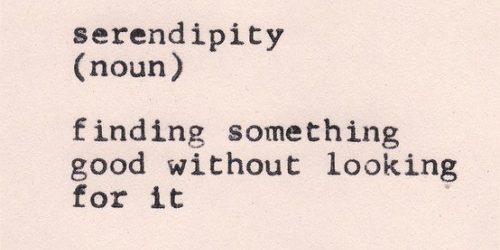When important and interesting information is reveled to us within the Information catalog, even though we weren’t looking for it
What is serendipity? The meaning of the word originates in the description of the writer and investigator Horace Walpole, who lived in the eighteen century and was tracing the stories of ancient Sri Lanka, known in the ancient world as Serendip.
Walpole described the stories of The Three Princes of Serendip, who set to the roads and “accidently” came across fortunate discoveries. Therefore, he chose to describe the phenomenon experienced as Serendipity.
Two centuries later, and serendipity can be experienced everywhere both physically and virtually wherever there is the possibility to discover new information. We see that when visiting the library or archive where we discover a new record, a new and interesting portfolio, an academic paper or a book that hasn’t been looked for originally, but we are exposed to it by chance.
Serendipity in the digital environment
Nowadays, in the world of the information highway, where there are endless on-line databases, many search engines of archives, museums or digital libraries, we see how frequently the serendipitous phenomena appear as we visit the site, the database or search engine.
Makri & Blandford( 2012) described this phenomenon in their study about scholars in the humanities, and the way they use search engines and digital environments. For example, a famous researcher in the museums field describes how she planned to search ‘learning work nets of libraries and museums’ but accidently hit ‘send’ and sent it to the search engine before completing the search query. Thus she was searching only for materials about the museum networks, which produced an important report she then used in another work, as a researcher of the British museum where she was working at the time.
Makri and his colleagues also conducted a long research comparing among dozens of different Internet users, in which they explored the search activities and their natural information search. They discovered how commerce sites like Amazon are a source of endless serendipitous results, when the network consumers described how they did not find a product using a certain search but came across other offers that appeared to them on the site, and found them even more relevant.
Academic researchers in the fields of science described how they reached articles being offered by various search engines, which they then used for research and other projects that they hadn’t planned to develop, and the new information has contributed to their advancement (Makri, Bhuiya, Carthy, & Owusu-Bonsu, 2015).
Serendipity in IDEA ALM systems
In Idea’s online catalog, designed for libraries, museums or archives, we often use and display options and suggestions of information based on other relevant search results, or those which have been prepared in advance by the administrators, as saved search queries, assuming that it will be relevant for consumers of information.
In Idea’s version 8.2, there is an integrated mechanism of visual queries based on the collections’ information and saved by the administrators. Thus, users can reach diversified information which they haven’t planned to reach in the first place using the traditional search, by clicking the suggested queries already displayed on the main page.
In addition, we made sure to incorporate possibilities for expanding catalog search results by a variety of functions, such as references to all other subjects relevant to the search results, internal connections between information items that are automatically generated when the system detects similar information and more. This allows the end user to extend and deepen the information about his research and roam into the catalog intuitively, even after receiving the relevant information item.
For further referrals
Makri, S. & Blandford, A. (2012). Coming Across Information Serendipitously – Part 1: A Process Model. Journal of Documentation, 68(5), 684-705.
Makri, S., Bhuiya, J., Carthy, J., & Owusu-Bonsu, J. (2015). Observing serendipity in digital information environments. Proceedings of the Association for Information Science and Technology, 52(1), 1–10.









